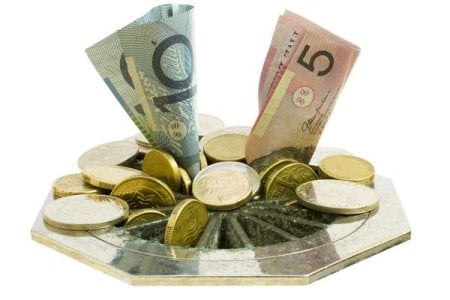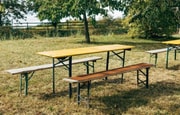Report reveals how Aussies adapt their spending habits amidst cost-of-living crunch
- Replies 14
In the face of a cost-of-living crisis that has many Australians tightening their belts, there are still a few non-negotiables that consumers are not willing to give up.
The latest spending habits from Down Under reveal a fascinating shift in priorities, with some surprising splurges and significant culls in popular buys.
According to a recent report by Roy Morgan, which delved into Australian consumers' expenditure patterns from April 2023 to March 2024, amidst the financial squeeze, Australians are increasingly spending on pet supplies, gaming, and beauty products while reducing spending on homewares, electronics, and baby and nursery products.
This shift suggested that, even in tough times, we seek comfort in our furry companions, entertainment at home, and personal care.

The pet industry is booming, with a 13 per cent rise in spending on items such as beds, toys, and grooming accessories.
Pet owners admitted to investing 'thousands' in their pets with ‘zero regrets or hesitations’.
‘'I spend thousands and not even on essential stuff, like stupid stuff I find cool that they do not like a litter robot and robot vacuum to clean up any litter they track,’ one pet owner shared.
‘A cat wheel, cat-sized couches, many cat trees and scratching posts, a catio, toys, etc. The essential stuff probably isn't too bad—maybe $100 a week.’
Gaming also saw a significant uptick, with a 12 per cent increase in the last year.
The allure of virtual worlds and interactive entertainment seemed strong, particularly when outdoor activities may be limited by financial constraints or health concerns.
‘I'm fixated on buying a PlayStation 5 currently to keep that feeling of boredom away, something I can justify being a solo male who's into gaming,’ one stated.
Likewise, consumers are willing to spend their hard-earned cash on books, crafts, hobbies, and games or toys.
Beauty products are not far behind, with cosmetics, skincare, and fragrances all recording increases.
Interestingly, while some are cutting back on professional beauty services, there's a rise in DIY treatments and more affordable alternatives from stores like Priceline and Chemist Warehouse, suggesting a shift towards value for money without compromising on self-care.
‘I stopped getting my eyebrows waxed and bought a professional wax kit and do them myself at home! I prefer how I do it and I have saved so much money as I was getting my eyebrows done every 3-4 weeks previously at $40-$50 per session,’ a Perth woman said.
Others are opting for inexpensive purchases over costly luxury cosmetics and skincare products.
‘I recently purchased cleanser from Woolies instead of Mecca. About a $60 difference in price and my skin is fine,’ a commenter shared.
‘After seeing my dermatologist and having this talk, she gave me a bunch of chemist options and, honestly, I'm surprised my skin is actually so much better,’ another agreed.
When it comes to technology, customers were found splurging on phones, accessories, and small electrical goods like kettles, irons, and hair dryers.
On the other hand, Australians had been cutting back on computers, tablets, computer accessories, software, as well as large electrical goods such as fridges and washing machines.
Consumers reduced their spending the most in categories related to homes, with interior design taking a hit. Home decorations, décor, manchester goods, and homewares all saw significant decreases.
There was a 21 per cent drop in spending on TVs, home theatres, and hi-fi systems, as well as on baby and nursery items—which could be attributed to the declining birth rate since 2021, according to the Australian Bureau of Statistics.

Personal entertainment such as streaming services and downloading movies and TV shows experienced a decline.
Many mentioned that when adjusting their household budgets, services like Netflix have been the first to be cut.
‘I don't even watch that many things but when the prices go up each year and content becomes more and more fragmented, I have no sympathy when the bottom falls out for all of them,’ one said.
Clothing and footwear had also been found on the chopping block, with many turning to second-hand stores as a budget-friendly and environmentally conscious alternative.
This change reflects a growing awareness of the impacts of fast fashion and a desire to make more sustainable choices.
‘I stopped buying so much stuff in general! Less clothes and what I do buy I try to get secondhand,’ one shopper shared.
‘I used to love going to clothing stores and was a bit of a fast-fashion addict but I've bought about six items of clothing this year and that was as a special treat on holiday,’ another said.
In light of the shifting consumer trends highlighted in Roy Morgan's report on Australian spending habits, many Australians are finding innovative ways to stretch their budgets amidst the current cost-of-living crunch.
From prioritising essential purchases to seeking out discounts and deals, Aussies are adapting their spending habits to navigate economic challenges.
This proactive approach to budgeting brilliance reflects the resilience and resourcefulness of Australian consumers in managing their finances.

Have you found yourself splurging on certain items while cutting back on others? What are your non-negotiables when it comes to spending, and how do you find balance in your budget? Join the conversation below and let's learn from each other's strategies.
The latest spending habits from Down Under reveal a fascinating shift in priorities, with some surprising splurges and significant culls in popular buys.
According to a recent report by Roy Morgan, which delved into Australian consumers' expenditure patterns from April 2023 to March 2024, amidst the financial squeeze, Australians are increasingly spending on pet supplies, gaming, and beauty products while reducing spending on homewares, electronics, and baby and nursery products.
This shift suggested that, even in tough times, we seek comfort in our furry companions, entertainment at home, and personal care.

Roy Morgan’s report highlighted Australian spending habits amidst the cost-of-living crisis. Credits: Shutterstock
The pet industry is booming, with a 13 per cent rise in spending on items such as beds, toys, and grooming accessories.
Pet owners admitted to investing 'thousands' in their pets with ‘zero regrets or hesitations’.
‘'I spend thousands and not even on essential stuff, like stupid stuff I find cool that they do not like a litter robot and robot vacuum to clean up any litter they track,’ one pet owner shared.
‘A cat wheel, cat-sized couches, many cat trees and scratching posts, a catio, toys, etc. The essential stuff probably isn't too bad—maybe $100 a week.’
Gaming also saw a significant uptick, with a 12 per cent increase in the last year.
The allure of virtual worlds and interactive entertainment seemed strong, particularly when outdoor activities may be limited by financial constraints or health concerns.
‘I'm fixated on buying a PlayStation 5 currently to keep that feeling of boredom away, something I can justify being a solo male who's into gaming,’ one stated.
Likewise, consumers are willing to spend their hard-earned cash on books, crafts, hobbies, and games or toys.
Beauty products are not far behind, with cosmetics, skincare, and fragrances all recording increases.
Interestingly, while some are cutting back on professional beauty services, there's a rise in DIY treatments and more affordable alternatives from stores like Priceline and Chemist Warehouse, suggesting a shift towards value for money without compromising on self-care.
‘I stopped getting my eyebrows waxed and bought a professional wax kit and do them myself at home! I prefer how I do it and I have saved so much money as I was getting my eyebrows done every 3-4 weeks previously at $40-$50 per session,’ a Perth woman said.
Others are opting for inexpensive purchases over costly luxury cosmetics and skincare products.
‘I recently purchased cleanser from Woolies instead of Mecca. About a $60 difference in price and my skin is fine,’ a commenter shared.
‘After seeing my dermatologist and having this talk, she gave me a bunch of chemist options and, honestly, I'm surprised my skin is actually so much better,’ another agreed.
When it comes to technology, customers were found splurging on phones, accessories, and small electrical goods like kettles, irons, and hair dryers.
On the other hand, Australians had been cutting back on computers, tablets, computer accessories, software, as well as large electrical goods such as fridges and washing machines.
Consumers reduced their spending the most in categories related to homes, with interior design taking a hit. Home decorations, décor, manchester goods, and homewares all saw significant decreases.
There was a 21 per cent drop in spending on TVs, home theatres, and hi-fi systems, as well as on baby and nursery items—which could be attributed to the declining birth rate since 2021, according to the Australian Bureau of Statistics.

Personal entertainment such as streaming services and downloading movies and TV shows experienced a decline.
Many mentioned that when adjusting their household budgets, services like Netflix have been the first to be cut.
‘I don't even watch that many things but when the prices go up each year and content becomes more and more fragmented, I have no sympathy when the bottom falls out for all of them,’ one said.
Clothing and footwear had also been found on the chopping block, with many turning to second-hand stores as a budget-friendly and environmentally conscious alternative.
This change reflects a growing awareness of the impacts of fast fashion and a desire to make more sustainable choices.
‘I stopped buying so much stuff in general! Less clothes and what I do buy I try to get secondhand,’ one shopper shared.
‘I used to love going to clothing stores and was a bit of a fast-fashion addict but I've bought about six items of clothing this year and that was as a special treat on holiday,’ another said.
In light of the shifting consumer trends highlighted in Roy Morgan's report on Australian spending habits, many Australians are finding innovative ways to stretch their budgets amidst the current cost-of-living crunch.
From prioritising essential purchases to seeking out discounts and deals, Aussies are adapting their spending habits to navigate economic challenges.
This proactive approach to budgeting brilliance reflects the resilience and resourcefulness of Australian consumers in managing their finances.
Key Takeaways
- Australian consumers were found spending more on items such as pet supplies, gaming, cosmetics, and skincare amidst cost-of-living pressures, according to a report by Roy Morgan.
- Popular items being reduced in household budgets included electronics, baby and nursery products, home décor, and clothing.
- Categories such as books, crafts and hobbies, and games or toys saw increases, indicating a shift towards in-home entertainment and activities.
- Australians were reportedly opting to cut back on expenses like streaming services and are seeking cost-saving measures such as second-hand shopping and DIY beauty treatments.
Last edited:







